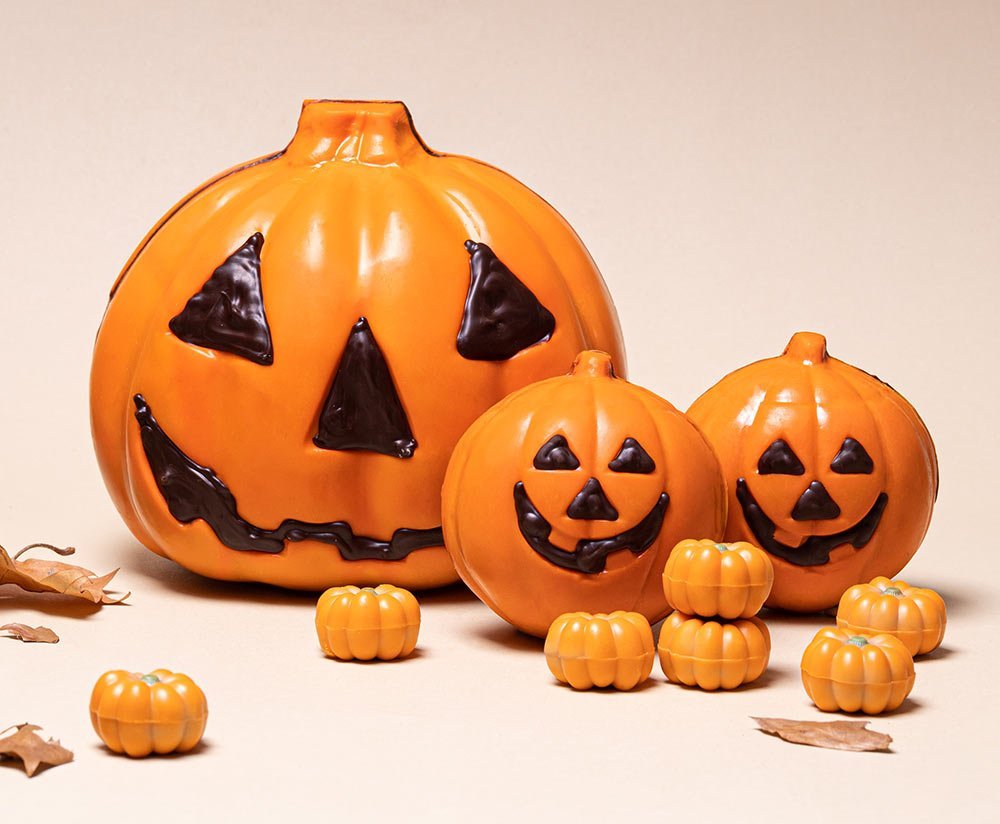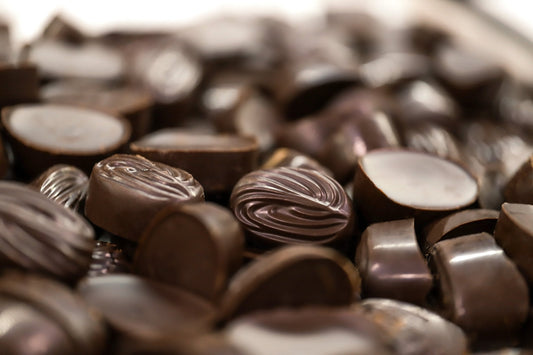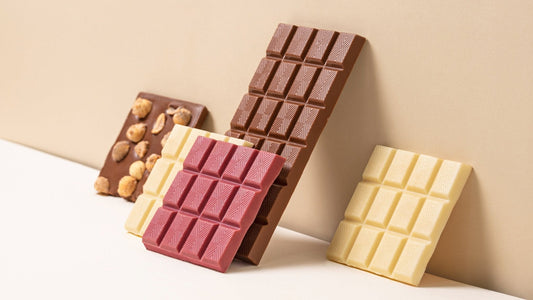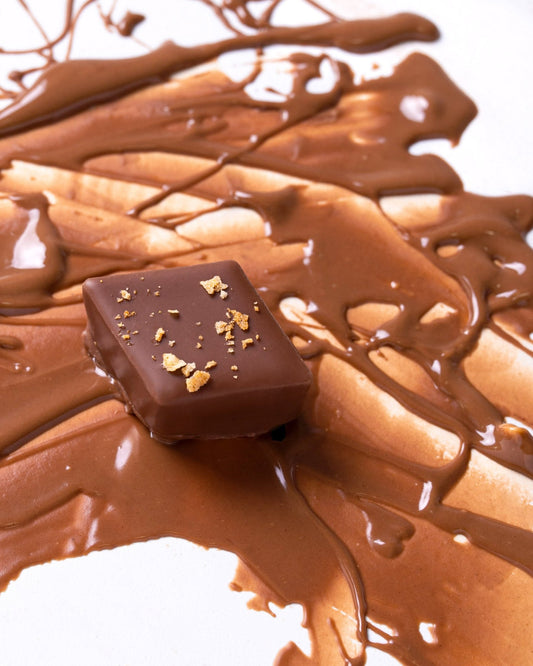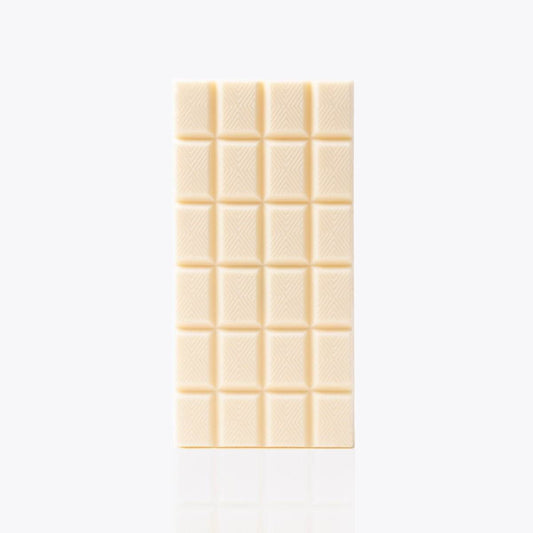Halloween Chocolate History: Why Do People Ask for Trick-or-Treating?
Cristina MolinerIf you're preparing your window display, a dessert table, or just want to know why chocolate is such a big star at Halloween, this text explains it in a simple way. Knowing the history helps you choose products, create little stories for your gifts, and better preserve what you buy or give.
The history of chocolate at Halloween blends ancient traditions, social practices, and the convenience of chocolate as a single treat. Here's the story and practical tips for enjoying and preserving chocolate during this time.
From Samhain to trick-or-treat: the origin of candy
Halloween has roots in the Celtic Samhain, a harvest celebration where food was shared and bonfires were lit. Over time, the holiday transformed, and in the United States, the custom of trick-or-treating became established: children go door-to-door collecting individually portioned candy, a formula that connects well with the chocolate format.
Cocoa: a sacred drink that came to life on a tablet
Before becoming a bar, cacao was a ritual drink in cultures like the Mayan and Aztec: bitter, spicy, and highly valued. After its arrival in Europe, it was sweetened, and with 19th-century innovations and 20th-century industrialization, bars and chocolates became popular. This allowed chocolate to become the quintessential practical candy to hand out on Halloween.
Artisan chocolates and their charm
While major brands produced "fun-sized" versions, artisan chocolatiers developed chocolates with special fillings and decorations. Today, artisan chocolate makers offer themed collections (pumpkins, ghosts, skulls) that are very attractive for gifts or for displaying on a dessert table.
Why chocolate dominates Halloween
- Immediate pleasure: creamy texture and intense aromas that appeal to many palates.
- Clear iconography: figures and colors that fit with the Halloween aesthetic.
- Practical format: small portions easy to distribute and store.
- Reasonable durability: Well protected, solid chocolate holds up better than many other treats.
A couple of resources to inspire you
If you're looking for ideas, recipes, or themed collections for this time of year, you can check out the recipe blog and the Halloween collection for inspiration on sizes and colors.
Simple tips for preserving chocolate at home
A couple of easy rules keep chocolate perfect until you're ready to eat it:
- Ideal temperature: Store chocolate in a cool, dry place, between 14–18°C. Avoid placing it near heat sources or in direct sunlight.
- Humidity: Keep humidity low (45–55%) to prevent sugar from crystallizing on the surface.
- Odors: Chocolate absorbs odors, so don't store it with highly aromatic products (cheeses, onions, strong spices).
- Refrigeration: Best avoided unless absolutely necessary (e.g., cream-filled or fruit-filled items). If refrigerated, place in an airtight container and remove at least 30–60 minutes before opening to prevent condensation.
How to choose and enjoy chocolates on Halloween
If you are going to buy or give chocolates, keep these guidelines in mind:
- Look for variety: combine dark chocolate, milk chocolate, and some white or fruity chocolate to satisfy different tastes.
- Labels: Read the allergen information (nuts, dairy, gluten) if you'll be sharing with children or at gatherings.
- Presentation: A small case or individual bag with a themed label makes the gift even more special.
- Serving temperature: Chocolate tastes best between 18–20°C; if it's cold, let it cool for a while before eating.
Ideas for using chocolate in your celebration
- Mini-gifts: bags with 3–4 themed chocolates for guests.
- Photo corner: Display some chocolate figures as edible props at the photo booth.
- Express workshop: Set up a place where people can decorate chocolates with sprinkles and small toppers (use gloves and tongs).
- Easy pairing: Offer a hot beverage option (hot chocolate, coffee, or spiced tea) that matches the chosen flavors.
What to avoid: common mistakes
- Do not leave chocolates in the sun or near hot spots.
- Do not mix chocolates with strong odors in the same container.
- Avoid opening cold containers without tempering them to prevent condensation from forming on the surface.
- Do not offer chocolates without clarifying allergens to children or people with intolerances.
Brief chronology: since when has chocolate been given as a gift on Halloween?
The custom of giving candy became popular with trick-or-treating in the United States in the mid-20th century. Chocolate became the most popular choice due to its size, flavor, and ease of packaging: from the 1940s to the 1960s, individual portions of chocolate became common in Halloween bags and favors, and since the 1990s, the custom has spread to many countries.
Summary
Chocolate takes center stage at Halloween for both cultural and practical reasons: its history tied to consumption, its easy packaging, and the possibility of creating unique pieces and collections. Whether you're buying or gifting, choose a variety, take care with its preservation, and add a themed presentation: this way, you'll turn a sweet treat into a memorable gift.
We are a team passionate about chocolate, with knowledge of its history, varieties, and everything that makes it a unique pleasure.
